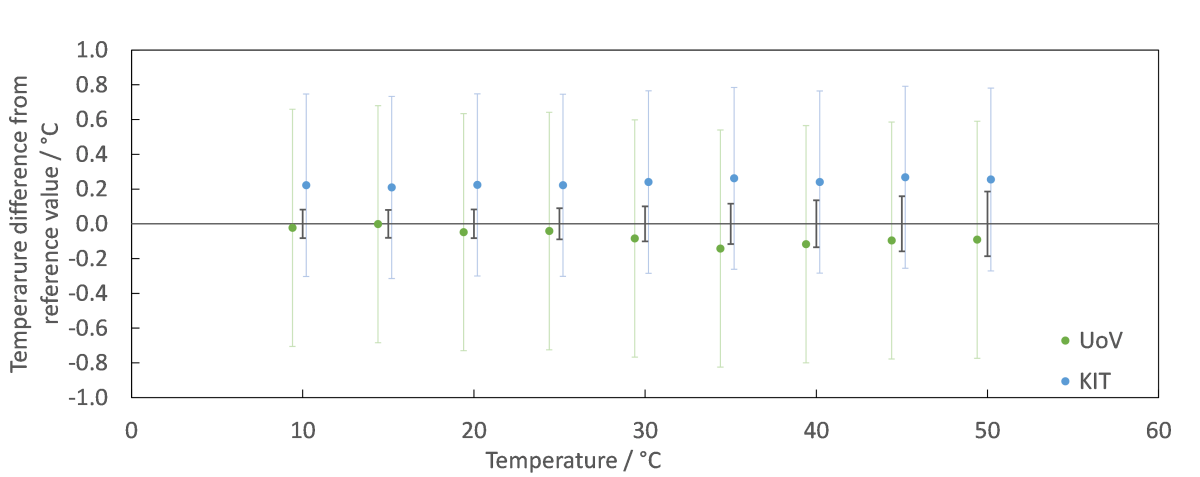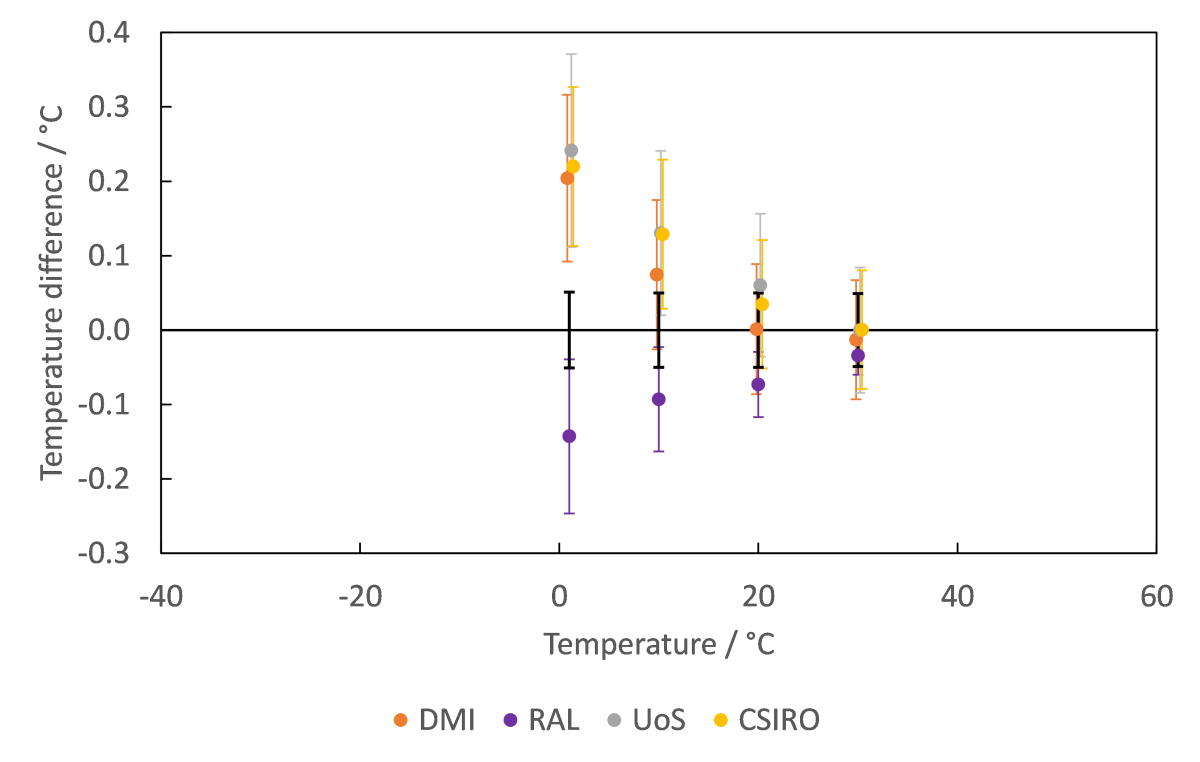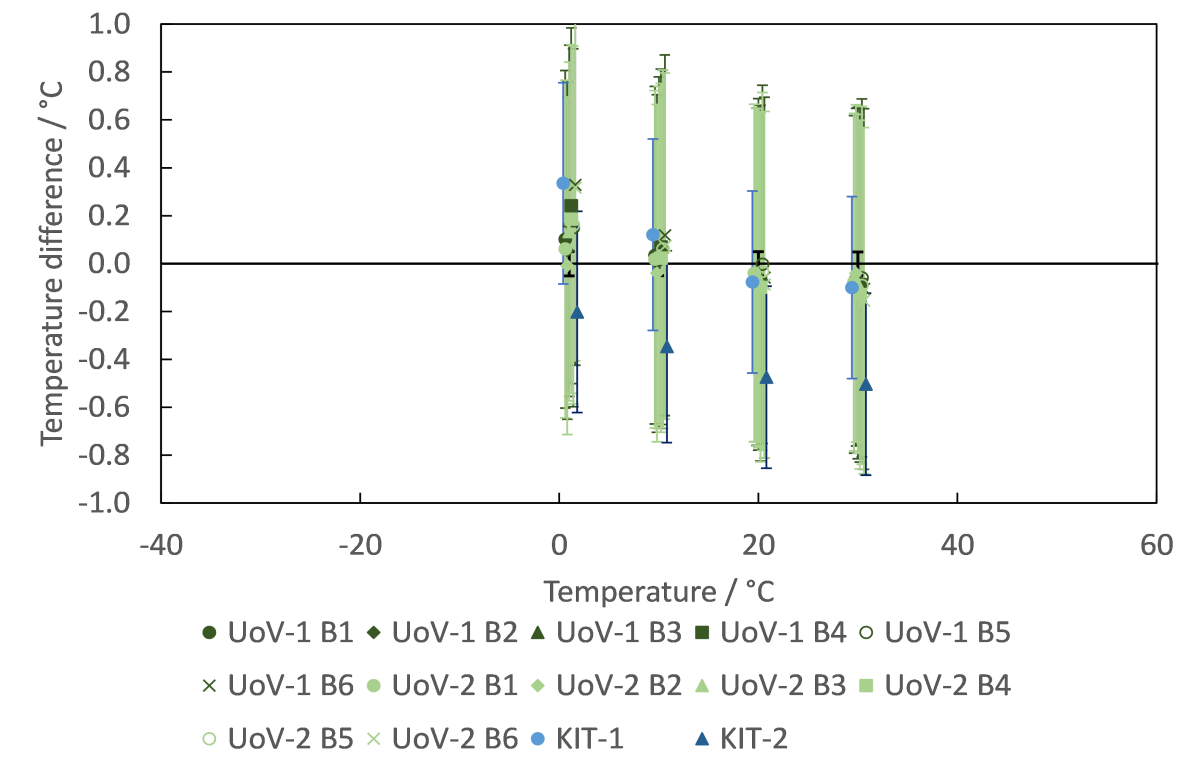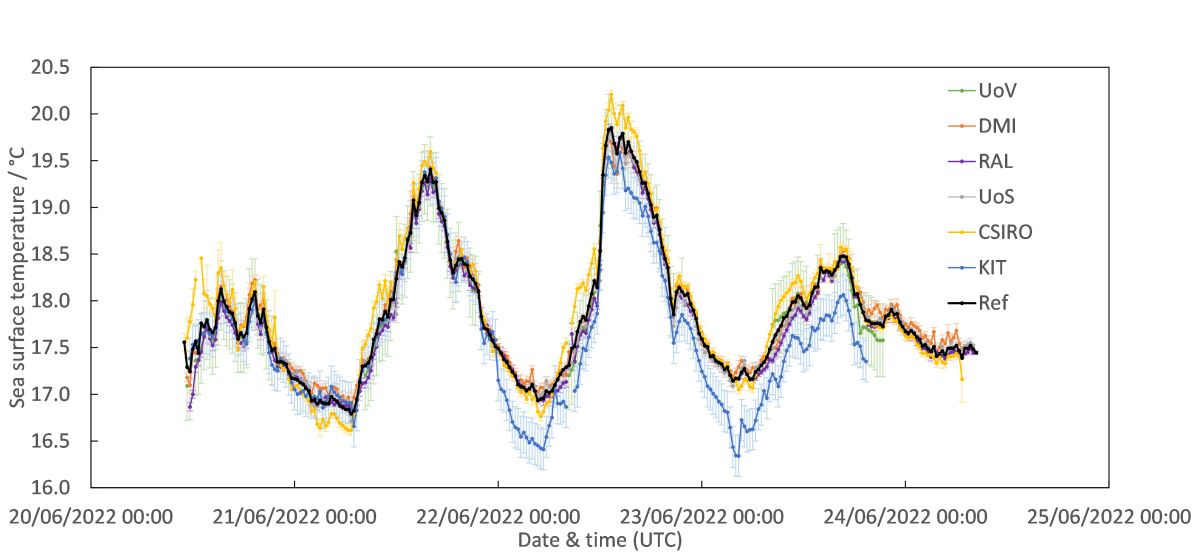To verify the accuracy of shipborne IR radiometers and continue the reliable validation of SST measurements from space to FRM SI units, the Committee on Earth Observation Satellites (CEOS) Working Group on Calibration & validation (WGCV) has been conducting comparisons of SSTskin measuring radiometers every 6-7 years. During such comparisons, radiometers are gathered from around the world and compared with reference standards as well as amongst themselves.
In June 2022 the project held one such CEOS WGCV international TIR radiometer comparison exercise, organised and hosted by NPL in the UK. Participants from UoS, RAL, DMI, CSIRO, Karlsruhe Institute of Technology (KIT) and the University of Valencia (UoV) brought together their respective radiometers, firstly to NPL for a laboratory comparison, and then to the south coast of England for a field comparison in which the sea surface was measured.
The laboratory exercise involved a comparison of participants’ radiometers, in which two NPL standard variable blackbodies (BB) were used to provide the reference value. A comparison of the participants’ blackbodies that were used to calibrate the radiometers was also performed and the NPL standard radiometer AMBER provided the reference value. The measurand in both cases was the radiance temperature on the International Temperature Scale of 1990 (ITS-90)[1] at a wavelength of 10µm.
The results from the BB comparison are shown below in Figure 1 and Figure 2. Specialised BBs (i.e. CASOTS and CASOTS-II) have a BB cavity that is immersed in stirred water bath and has a substantially smaller associated uncertainty. Temperature readings show good agreement with the reference value.
Figure 1: Laboratory comparison results showing the temperature difference from reference value for the specialised BBs (CASOTS and CASOTS-II). Error bars denote k = 2 uncertainties.
Figure 2: Laboratory comparison results showing the temperature difference from reference value for the commercial BBs (Landcal P80P). Error bars denote k = 2 uncertainties.
The results from the radiometer comparison are shown below in Figure 3 and Figure 4. Temperature readings show that at zero and sub-zero degrees, the uncertainty estimation should be enlarged for all radiometers (although practically, the sea does not go this cold).
Figure 3: Radiometer comparison results showing the temperature difference from reference value (a stirred liquid bath BB) for the ISAR and SISTeR instruments. Error bars denote k = 2 uncertainties.
Figure 4: Radiometer comparison results showing the temperature difference from reference value (a stirred liquid bath BB) for commercial instruments. Error bars denote k = 2 uncertainties.
The field comparison took place at the end of a south-facing Pier in Boscombe, Bournemouth. All the radiometers were positioned so that they viewed the same area of sea. Continuous measurements were taken of the sea radiance as well as the sky background radiance and corrections were applied for the reflection and the emissivity to derive the SST. The measurand in this case was the SST and the reference value was the mean of the participants’ reported SST values (excluding outliers from one of the instruments, which were possibly due to a contamination of the optics 2 days in to the field exercise).
The results from the field comparison are shown in Figure 5. There was a two times improvement in agreement compared to the 2016 comparison (in terms of mean of the difference from reference value). An abrupt shift of KIT’s SST data readings can be seen after the 22/06/22, however this was not discovered until after the experiment. This result shows the importance of using internal reference BB for internal calibration (as in ISAR and SISTeR). All radiometer readings agreed with the uncertainties for all temperature ranges of interest, and the averaged SST values over 20 minute durations show very good agreement.
Figure 5: Field comparison results showing the temperature difference for all instruments, averaged over 20 minutes. Error bars denote k = 2 uncertainties
The results of this work package can be found in more detail in the WP-40 Reports here, and will also be published in two (as yet, unpublished) journal papers: Yamada, et al., “CEOS International Thermal Infrared Radiometer Comparison: Part I: Laboratory Comparison of Radiometers and Blackbodies”, and Yamada, et al., “CEOS International Thermal Infrared Radiometer Comparison: Part II: Field Comparison of Radiometers”.
[1] http://lef.mec.puc-rio.br/wp-content/uploads/2015/05/The_International_Temperature_Scale_1990.pdf




